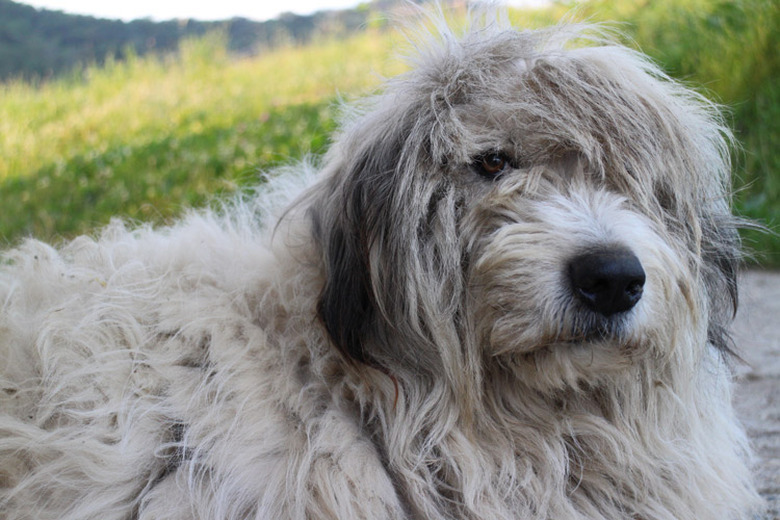The Dangers Of Leaving Mats In Dog Fur
Not only are mats in fur unsightly, they can hurt the poor pooch as well. With the exception of the "corded" dogs — the puli and the komondor — dogs are not supposed to develop dreadlocks, so you should take care of mats in fur before they get out of hand. Why? Here are a few reasons:
Reason One
Most mats occur around the anus, in the armpits, behind the ears and thighs, and in the groin area. Not all dogs get mats, certainly short-haired dogs are not plagued with these painful and ugly masses. But dogs with long, soft, silky coats or curly coats, or dense undercoats, are prone to them if they are not groomed regularly. Mats on a dog indicate a neglectful owner, In some cases, an owner can get slapped with an animal cruelty charge for dereliction of dog duty. And we hate to have to say it, but leaving mats on a dog constitutes neglect.
Reason Two
You can't leave mats on dogs because mats cause the skin underneath to become red, inflamed, moist and yeasty. Severe mats pull and pinch, and they affect hair growth. All kinds of nasty infections, such as candida, can form under mats and cause the dog great pain as the skin underneath is unable to heal itself from the onslaught of infection. With no exchange of air, the skin underneath the mat oozes with all kinds of disgusting matter that soaks into the mat, which in turn causes the mats to smell really bad.
Reason Three
The bad smell emitted by the irritated skin and mats, as well as the moisture provided by the yeast and pus, attracts a host of pesky varmints who live and work in the mats and the skin underneath. Insect larvae, including maggots, thrive in the environment created by the mats. These bugs feed off the decaying skin and bring infection into the mix. If the infection gets into your dog's bloodstream, it could be fatal. Insects and pathogens multiply under the mats where you cannot see them, so you wouldn't know just how bad it is until the mats are removed.
Reason Four
Mats cause severe pain in dogs when they begin to pull up on the skin and tighten around tails and limbs. His lumpy coat gets in the way of his getting comfortable. Tangled fur harbors feces and urine, as well as any purulent material from an infection, so not only is it painful, but the irritation causes itching. The situation worsens when the dog, in his attempt to gain relief, bites and licks at the area, leaving saliva which further dampens the mat and ingesting filthy matter.
Prevention
Prevention of mats is much better than treating them. Treatment for mats is painful for the dog, costs a lot of money and can earn you some dirty looks from professionals whose job it is to try to undo what neglect has done. Often mats cannot be cut or shaved off, so they must be carefully and painstakingly combed out, at least enough to get a scissors or shaver under. Unless the mats are very small and just starting out, never try to de-mat a dog yourself, especially by cutting them. You risk nicking the skin and hurting your dog.
References
WebMD: Dogs Shedding and Grooming
American Kennel Club: Puli
American Kennel Club: Komondor
Chetek Veterinary Clinic: Does Matting Matter?
Thoughtful Paws Grooming: The Matted Dog
About the Author
Michelle A. Rivera is the author of many books and articles. She attended the University of Missouri Animal Cruelty School and is certified with the Florida Animal Control Association. She is the executive director of her own nonprofit, Animals 101, Inc. Rivera is an animal-assisted therapist, humane educator, former shelter manager, rescue volunteer coordinator, dog trainer and veterinary technician.
